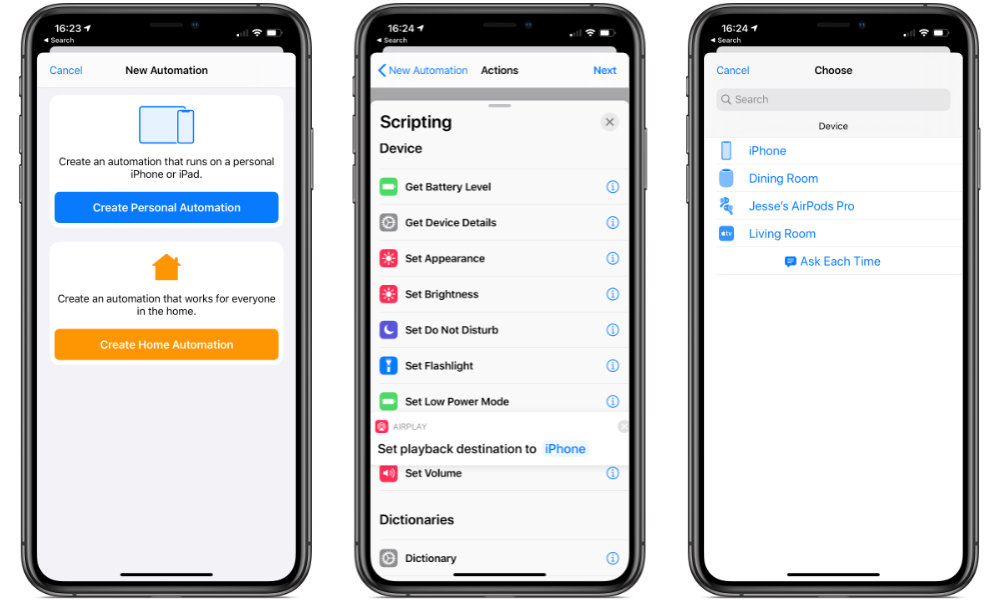How to Automatically Reconnect Your AirPods to Your iPhone Every Time
 Credit: Omid Armin / Unsplash
Credit: Omid Armin / Unsplash
Toggle Dark Mode
Apple’s AirPods have the most seamless pairing experience with the iPhone of any Bluetooth headphones out there — and they should, considering they’re made by Apple to work hand-in-glove with its iOS devices. However, one aspect of the user experience that Apple still hasn’t fully managed to crack is getting your AirPods easily reconnected to your iPhone after you’ve been using them with another device, like your iPad, Mac, or Apple TV.
While AirPods pair seamlessly via iCloud with all of your devices, they still pair up with the last device they were connected to — in that regard they’re just like any other set of Bluetooth headphones. This means that if you’ve been using them to watch The Morning Show late at night on your Apple TV, that’s the device they’ll go looking for the next time you pull them out of their charging case.
Although the process for reconnecting them to your iPhone isn’t all that cumbersome — just swipe down to bring up Control Centre, tap the AirPlay icon in the top-right corner of the media playback card, and then tap the AirPods to connect them — this still requires that you either know that your AirPods aren’t connected to your iPhone in the first place, or that you always make a habit of checking before starting to play something. Fortunately, however, as discovered by a user on Reddit, there’s an even easier way to handle this thanks to the new Shortcuts automations introduced in iOS 13.
The Shortcuts app was first introduced last year with iOS 12, but it got some pretty cool automation enhancements in iOS 13 that have opened up a lot of new possibilities, one of which is the ability to automatically run a set of procedures whenever a specific app is opened. So, for example, you can run a shortcut script every time you open Music, Podcasts, or even Spotify or YouTube. These shortcuts can do a lot of useful things, one of which is setting your audio playback destination to go to your AirPods. Here’s how to set it up:
- Begin by connecting your AirPods to your iPhone
- Open the Shortcuts app
- From the bottom, tap the Automation tab
- Tap the Plus (+) symbol in the top right corner to create a new action
- Tap “Create Personal Automation”
- Scroll down to the bottom of the list and tap “Open App”
- On the next screen that appears, tap “Choose”
- Find and tap on the apps you want to use with your AirPods (i.e. Music). Note that you can select more than one app here.
- Tap “Done” in the top right corner
- From the next screen, tap “Next” in the top right corner
- Tap “Add Action” to choose the actions that will run when the selected apps are opened
- Tap “Scripting” from the options at the top of the screen
- Scroll down to the “Device” section and tap “Set Playback Destination”
- Beside “Set playback destination to” tap “iPhone” to change it to another destination
- Select your AirPods
- Tap “Next”
- Turn off “Ask Before Running” to prevent your iPhone from prompting you each time the shortcut is run
- Tap “Done”
Once you’ve set up this Shortcut, it will run each time you open the selected app(s), setting the iOS-level playback destination to your AirPods, provided they’re in range and not in the wireless charging case. If your AirPods aren’t available, then nothing happens, and your playback destination remains set as it was before.
Either way, you’ll receive a notification from the Shortcuts app each time the shortcut runs, whether it successfully switches the playback destination or not. Unfortunately, there’s no way to disable this, as it’s a system-level notification, but it may be a small price to pay for being able to seamlessly reconnect to your AirPods without having to dig into Control Centre each time you’ve been using them with your iPad, Mac, or Apple TV.
It’s also worth adding that this doesn’t just work with AirPods — it can be used to reconnect any set of Bluetooth headphones, or even set a playback destination to your HomePod or other Bluetooth or AirPlay speaker, and can be handy if there’s a particular app that you always use with a specific playback destination.







